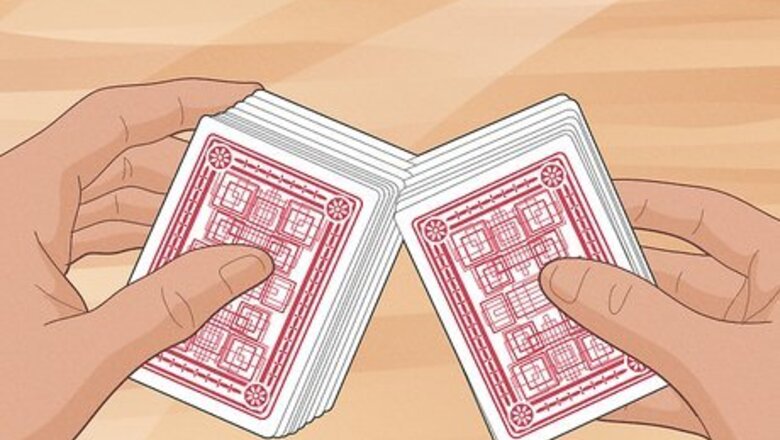
views
- Spider solitaire is a one player card game that uses two decks of cards.
- Players win points by clearing full runs of cards off the deck—stacks of consecutive cards that go from king to ace.
- Spider solitaire has three main variations and difficulty levels: 1 suit (easiest) 2 suit (medium) and 4 suit (original).
Playing 4 Suit Spider Solitaire

Shuffle 2 decks of playing cards together. Start by removing the jokers from two decks of cards and shuffling them all together.
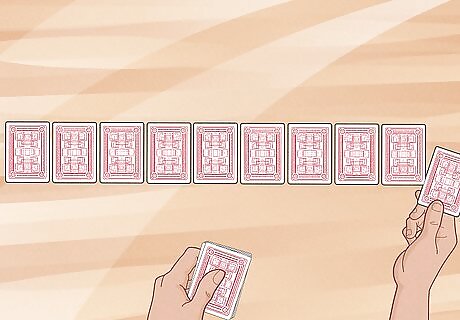
Deal out 10 piles of cards in a horizontal line. Place ten face-down cards next to each other in a horizontal line. Deal ten more face-down cards on the original ones, and then repeat until all the piles have 4 cards. Add one more face-down card on the four left-most piles, then, deal another card face-up on each pile. From left to right you will have 4 piles of 6 cards, then 6 piles of 5 cards. Leave extra space on the table below the piles for the runs you'll be making—they'll be 13 cards long.
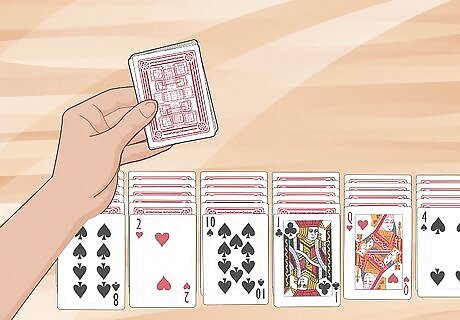
Set the rest of the cards aside, face down. The leftover cards go into a pile called the "stock." You draw from it when you run out of moves in your columns, or “tableau.”
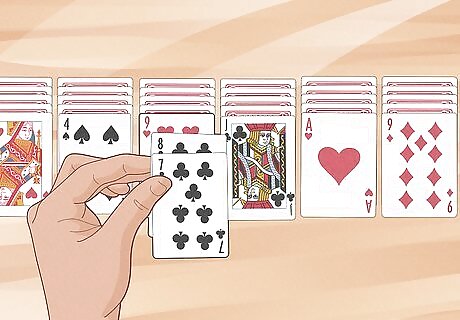
Move the face-up cards on to cards of a higher adjacent number. The goal of the game is to clear all the cards off the tableau, so start uncovering them! The top card in a pile can be moved along with any cards of the same suit that follow it in descending numerical order. For example, in a run that goes 9 of hearts, 8 of clubs, 7 of clubs, the 7 can move, the 8-7 group can move, but the 9 is “blocked” until the 8 and 7 are taken off of it. When a card or run is under a card that’s the wrong number or suit, it is “blocked” and can’t move. Moveable cards don’t need to be put on cards of the same suit, just in the correct numerical order. So a 5 of hearts can be placed on a 6 of spades (but then the 6 can’t be moved). Place each new card slightly lower than the card you're playing it on so you can still see the value and suit of each previously played card.
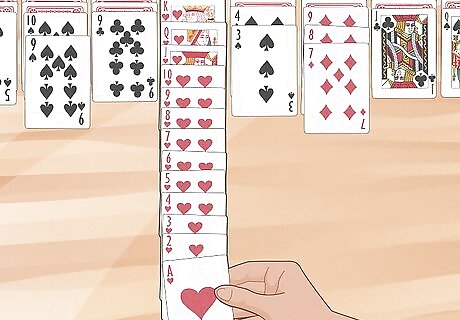
Build sequences of cards in descending order. Clear the cards by building king-through-ace sequences of the same suit. Each time the bottom most face-up card is removed, turn up the face-down card below it. Once you fully empty a column, put new moveable cards down in it.: So for example, “K-Q-J-10-9-8-7-6-5-4-3-2-A” of hearts is one fully built sequence. Always put a card on a card of the same suit if you can. If you put an off suit card down, the card below it is blocked until the top card is removed.
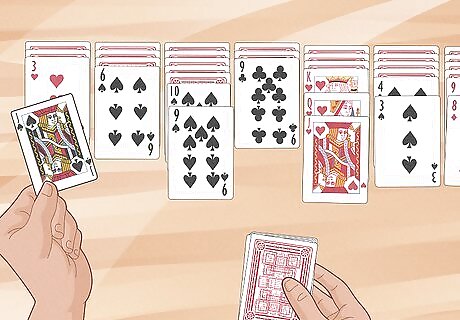
Deal cards from the stock when you run out of moves. If you look at your tableau and don't see anything you can possibly do, turn to your stock. Deal one card face-up from the stock onto each of the 10 card stacks, then continue to play. Cards from the stock can’t be dealt to empty columns. Put any moveable card in a free slot before taking from the stock. Put kings down on available spaces whenever you can. This is the only way to move a king, since it’s the highest card. When you run out of stock cards and moves it’s game over. If you keep running into trouble playing 4 suit spider solitaire, consider trying an easier version, like 1 or 2 suit.
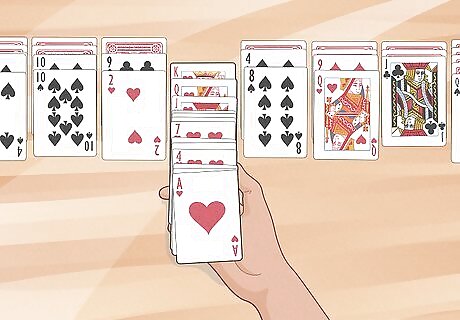
Remove king-through-ace sequences from play once they’re created. Completed sequences can be taken off the tableau and set aside face-up in the “foundation”—your scoreboard, basically. When you have 8 stacks in your foundation, you're finished! Take care to keep the completed sequences separate from the stock.
Playing 2 Suit Spider Solitaire
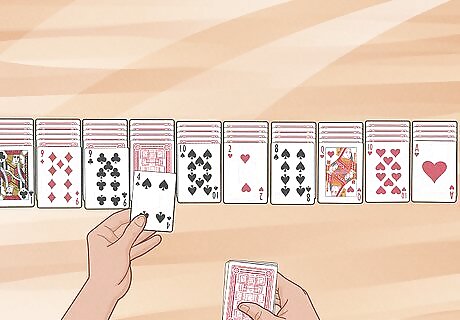
Deal out your cards the same way as in 4 suit. Use the same amount of cards and the same format; so 4 piles of 6 cards on the left and 6 piles of 5 cards on the right with the top card on each pile flipped face-up. The rest of the cards go face-down on the side in the stock.
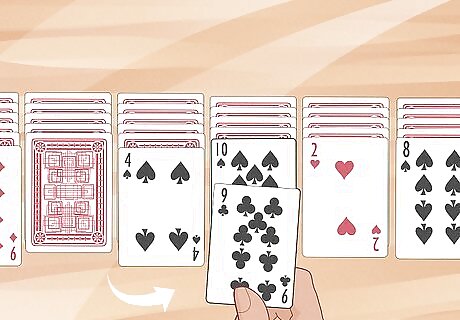
Place cards according to color. This time, instead of paying attention to suits, lump the cards together by color. That’s to say, hearts and diamonds are one “suit” and clubs and spades are another. Flip over face-down cards once they’re uncovered and deal one face-up card to each column from the stock when you’re out of moves. Fill any empty columns with any moveable card before dealing from the stock. If you can, put a king.
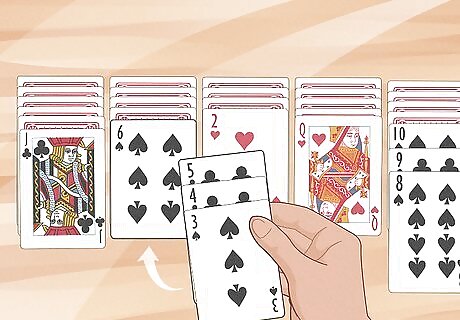
Move numerical sequences of the same color. Organize cards by descending value (a 6 can only go on a 7, a queen can only go on a king, etc.) and color (red or black). In the 4-suit version, runs could only be moved if they were all one suit (all hearts, for example). In this game, you can move runs of all one color (for example, 3 of spades, 4 of clubs, 5 of clubs). In this game, cards are “blocked” and can’t move when the card on top of them is the wrong color or in the wrong order. For example, if a 9 of hearts is under an 8 of clubs, the 9 can’t move until the 8 is taken off of it. The only difference is how you move the runs, not how you make them.

Complete 8 king-through-ace runs to win. Once you have every card of one color, king through ace, laid down on a column, take it off and put it to the side, face up. When you get 8 stacks of runs, you win the game. Completed runs can be made out of clubs mixed with spades or hearts mixed with diamonds. If you’re having difficulty with this method, don’t worry. Spider solitaire can take a while to get the hang of, so start with one suit if you’re a beginner—it’s much easier.
Playing One Suit Spider Solitaire
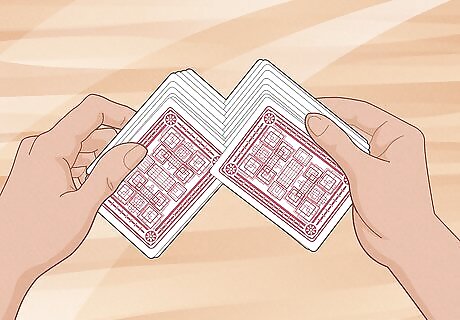
Shuffle 2 decks of playing cards together. One suit spider solitaire is the easiest way to play the game, so it’s the best for beginners. Remove the jokers and shuffle the decks.
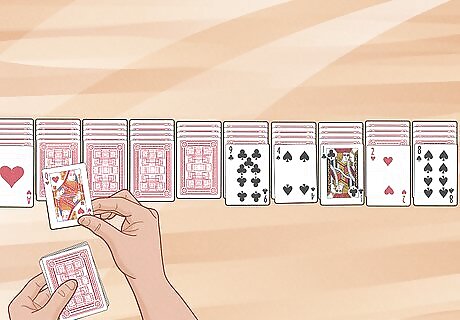
Deal ten piles of cards and make the stock. Deal out ten stacks of face-down cards—4 piles of 5 cards and 6 piles of 4 from left to right—then deal one face-up card on each stack. Put the rest of the cards face-down by the tableau to make the stock. Extra cards are dealt from the stock throughout the game.
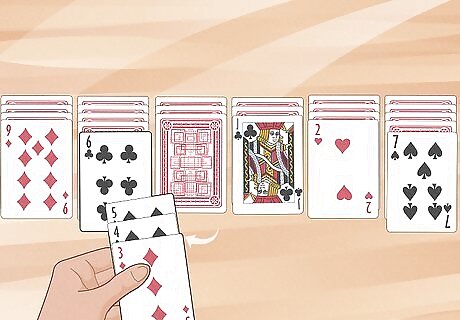
Move cards on to other cards that are one value higher. Like in the earlier games, any card at the end of a column can be moved, as well as unblocked numerical runs. Unlike the other versions, however, you can move runs of numbers that aren’t of the same suit. So a 5-4-3 run made of spades and diamonds can be moved to a 6 of any suit. A “blocked” card or run has an out of place card at its end. So if you have a 4-3-2-8 run only the 8 can move.
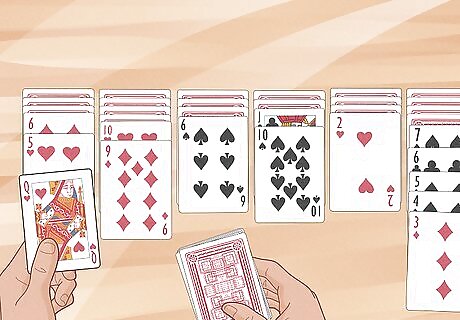
Deal from the stock when you’re out of moves. When you can no longer move or uncover anything, deal one face-up card from the stock onto each of the 10 stacks. If any of your columns are empty, place a moveable card or run on it. Running out of moves and stock cards means game over.
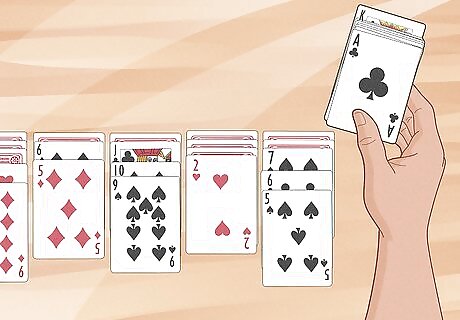
Put completed sequences in the foundation. When you complete a sequence (a king-ace run made from any mix of suits) remove it from the tableau and place it to the side. The collection of K-A sequences is called your “foundation.” Get 8 stacks in the foundation and you win!
Playing Spider Solitaire on Windows
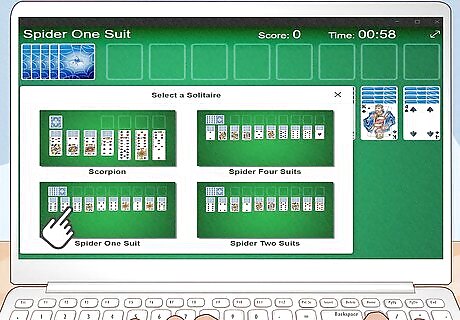
Choose your level of difficulty. If you're a newbie to the Spider Solitaire scene, start off with 1 suit to get the hang of it. Once you get accustomed to 1 suit, move on to the harder versions. A large part of this game is chance. If you get bad deals from the stock, you could be out of luck. Don’t get discouraged by a few bad games, it can take a while to get your first win.

Take advantage of the "Hint" feature. If you need a little help, pressing “H” will light up the next card you should play and where to place it. Take a second after you hit it to look at the tableau and determine why that move was the best one for your situation. Limit yourself to a few hints each game. Relying on it too much makes it hard to figure out patterns and strategies.
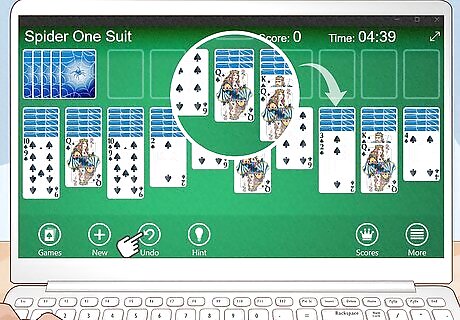
Use the "Undo" button to go back. Pressing “Undo” lets you peek under cards when you don’t know what decision to make. If you're not sure what to do, move a card, see what's under it, and put it back if you’re not happy with the result. Once again, don’t rely on the undo button if you want to really learn game strategy.
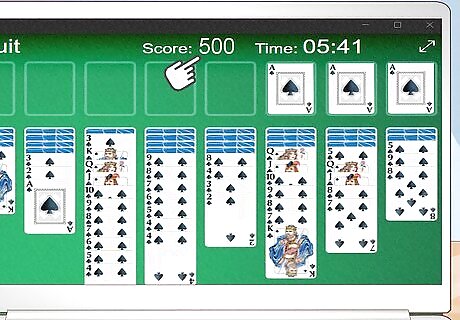
Practice raising your score. The Windows version of this game starts you out with 500 points. Every move you make subtracts one point, then, if you win, it multiplies that score by 100. See if you can beat your own personal record next time you play!




















Comments
0 comment